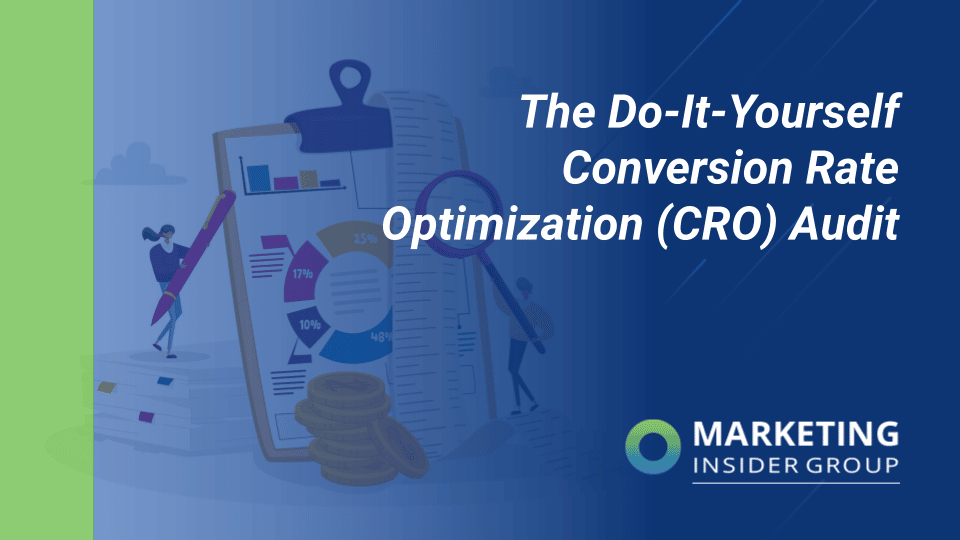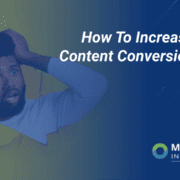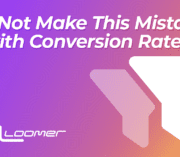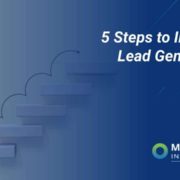The Do-It-Yourself Conversion Rate Optimization (CRO) Audit

Conversion rate optimization is more important than you might think for your overall bottom dollar. I mean after all, the whole point of marketing is to get prospects to convert to paying customers.

But how can you ensure what you’re doing is the best it can be – especially with the digital marketing landscape always changing and evolving? Answer: a conversion rate optimization audit!
Thegood.com says:
With conversion audits, you force yourself to step outside of the jar and see your customer’s purchasing experience for what it truly is, not what you’ve been hoping to create over the last few months or years.
An audit is a deep look at your conversion rate optimization that enables you to pick it apart and put it back together to make it the best it can be. Asking qualitative and quantitative questions will provide you with answers that can boost your website’s efficiency in converting prospects to clients.
New to conversion rate optimization? Here’s an informative video to help you out from Neil Patel:
Quick Takeaways:
- Conversion rate is the ultimate metric when evaluating your overall return on investment (ROI)
- Auditing your efforts and figuring out where your strengths and weaknesses are will help you build a better website overall
- Setting an effective call to action (CTA) is the perfect ending to your content and can dramatically increase your conversion rate
But how do you know when it’s the right time to perform a CRO audit? Setting deadlines based on overall conversion progress is a good way to start. For example, you might not audit until you’ve hit 500 website conversions or a certain number of impressions.
These goals are different for every business, so decide what success looks like to you before scheduling your conversion rate optimization audit.

Source: Marketing Charts
The basics of conversion rates
Views are great, but what happens after the initial click? Is the reader just leafing through your website? Are they sharing it? Are they actually purchasing your product and scheduling your services, or are they just browsing?
Conversion rate shows how many prospects are becoming customers. This metric is the real shining gem of your content marketing efforts! Converting prospects should be your top priority with content marketing.
Oftentimes the places where you are producing and publishing media give you excellent analytics tools to help assess what ads or content is producing the best conversion rate.
Get the easy stuff out of the way first
Go onto your website and click around. You don’t have to have a real purpose other than making sure everything is working like it should. Little bugs make a lot of difference in user experience online, and finding them to send to your IT department can clean up your website pretty dramatically.
Hotjar.com includes a fantastic list on the bugs and general formatting things to look for:
- An attention-grabbing headline
- A clear value proposition
- High-quality images
- Liberal use of white space
- Social proof through testimonials, case studies, and user-generated content on social media
- Easy ways to get in touch with you either via live chat or a contact form
- Clear, consistent CTAs
You know when you click on someone’s link or page and there’s a broken link or empty page? How unprofessional does that look? CRO audits are a chance to go in and track down those mistakes to maximize your overall conversion rates.
Look deeper at your pages that convert the most
Ok, this is a bit of a loaded statement. Yes, you want to dive deep on the articles and pages that harvest the most conversions, but you also need to take care of the pages viewers will see the most.
Things like your landing page and contact page may seem trivial, but first and last impressions make a world of difference in the online user experience. We commonly refer to these pages as top of the funnel and bottom of the funnel.

Source: Visual Paradigm Online
Ask your visitors what they think
Who doesn’t like to be asked what’s on their mind? Communicating with your audience is an important step in identifying their interests and concerns relevant to your product or service.
What communities are your company invested in online – more importantly, where is your online voice? If you don’t have one, you aren’t controlling the market narrative and you definitely don’t have an easy access to their thoughts and ideas.
By improving your virtual presence, you are also maintaining an outlet to have your written content on your prospects’ screens.
You can’t forget the most obvious way of listening to your clients comments and concerns! Surveys! Sending out surveys via email blast and your social channels is a great way of getting directly to the people that use your website the most.
If you really want results, you should sweeten the pot with a discount or freebie upon completion. This enables both parties to walk away satisfied, as you get the data for a more enriching experience, and they get money back on their next purchase.
Love efficiency? You can double this up as a prospect and client audit too. Asking for general information like demographics and psychographics is a good way to get your marketing and sales departments a little extra data to work with.
Plus, it’s a great time for qualitative research. Take the time to read the comments you get from surveys. Some might not be great, but being able to read exactly what your clients and prospects are thinking about is a gift. Even with a small sample size, it’s important to keep your finger on the pulse of your audience.
Check your mobile optimization
This seems like an obvious one, but when was the last time you opened your website on your phone? Mobile viewability is not only necessary but a must have when publishing content. More than half of all content is viewed on a phone.
If your website isn’t optimized for it, you’re only making yourself look bad! This is one of those things that is perfectly acceptable to hire contractors or consultancies for. This includes things like videos on your website being optimized for mobile and making sure your site doesn’t run slow on a phone.
It should go without saying that this doesn’t mean you should neglect your traditional online website in favor of mobile. There should be a balance between the two, and both should have the same content and presentation with appropriate formatting.
A/B Testing
A/B testing is one of the easiest ways of identifying what changes you can make to your website to turn more of your visitors into customers.
An A/B test involves pitting two slightly different versions of a webpage against each other – for example, version A might have green CTAs, while version B might have red CTAs.
You’ll then send 50% of your visitors to version A, and 50% to version B.
Before long, you should be able to identify which version of the page results in more conversions.

Source: Pitstop Media Inc
Whichever version performs best “wins.” At that point, you might make the winner a permanent fixture on the page or perform another test to find out if another variation on the page could perform even better.
Formstack changed just three words from their main menu – “Why Use Us” became “How It Works” – and saw a 47.7% increase in clicks.

Consider your organic search ranking status
Getting views on the content you publish for your website isn’t exactly the easiest thing to accomplish. It’s really easy to throw money at paid advertising to bolster your impressions on your content marketing efforts, even if it does hurt to see that much of your marketing budget disappear.
When conducting your CRO audit, consider which content that’s having trouble converting needs to be optimized. Content optimization inadvertently leads to conversion rate optimization down the line, as organic search is crucial to converting prospects into customers.
Organic search is for the prospects you haven’t made contact with yet. When they’re searching for general terms related to your product or service, it’s your aim to be one of the very first things they see on the page. What can you do to optimize your content, and your SEO results?
Make sure all of your blog and written content is following these important rules:
Keep your word count between 1000 – 1800 words
Google likes articles within this range. Too little or too many might keep your hard work from ranking where it should!
Know your keywords
SEO/SEM is most successful when you know what words are the most important to what you talk about. Back to our tech example, words like tech, wearable, watch, would likely contribute best to a higher ranking among similar articles.
Have a compelling meta description
The hook is everything, right? Having a good description under your article title will be the blurb prospects read. If it’s boring or irrelevant to them, why would they click on your article?
Internal Links
Internal links are hyperlinks in your blog content that link to other pages within your domain. You should include 1-2 internal links in every blog post.
Call to Action (CTA)
CTAs tell readers what their next step is for interacting with your brand, and they can increase conversion rates by 121%. CTAs are the get up and do this part of your article, and are crucial to getting shares and engagement from your readers.
Content optimization IS conversion rate optimization! Overhauling all of your content should be saved for another time, but this is something to make note of now while you’re doing an in-depth dive for future change.
Put your next CRO audit on the calendar NOW
Discuss with your team about what your next set of benchmarks to hit for your next audit are now! Oftentimes we can easily forget about optimizing and reviewing different parts of our website. This cannot be the case with something as important to your overall efforts as conversion rate optimization.
When setting your new benchmarks, consider thinking ahead with questions like what kind of numbers are we expecting after this current audit or should we be shooting hire than we were? Be prepared and remember what data you were trying to improve the first time around.
This will help you stay on track to building up your next big audit.
Wrap up
Yes, a conversion rate optimization audit takes a significant amount of time and care. But it isn’t without good reason, as making sure you’re maximizing your content’s ability to convert is crucial to your brand’s overall bottom dollar.
By thinking critically and asking for opinions, you can have a better understanding of where your user experience is thriving and where it is falling short. Keep your mind open and really listen to what people have to say about your website.
Now that you know what you’re looking for, it’s time to get to work and start your conversion rate optimization audit!
Do you want to use some of the marketing strategies seen here on MIG’s site but need some help or advice? Marketing Insider Group has a team of 35+ experienced writers ready to produce content for YOUR business. Check out our weekly blog content service or schedule a free consultation today!
The post The Do-It-Yourself Conversion Rate Optimization (CRO) Audit appeared first on Marketing Insider Group.







